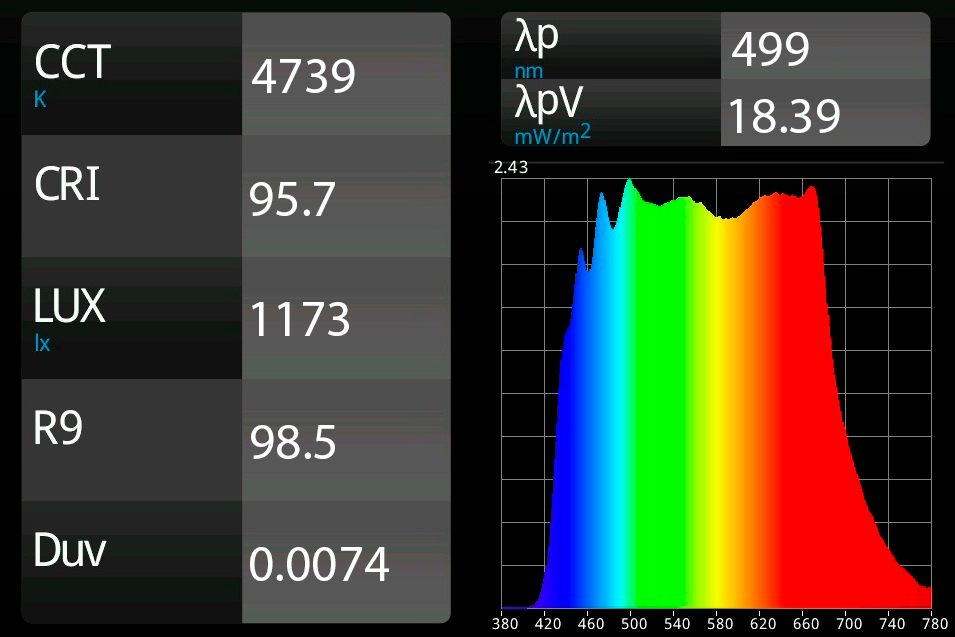Regenerative energy
The intensity of the emitted light of Spectrasol illumination is also enhanced in the photobiomodulation area (670 nm) supporting retinal regeneration.
This photobiomodulatory (PBM) protective therapeutic effect counterbalances the harmful HBL effect due to the continuous representation of red wavelengths in the spectrum in general as well as specifically in the PBM region of 670 nm (i.e. it is a balanced spectrum with continuous energy intensity in the red region without a drop at 670 nm typically seen in LED sources). It therefore serves as a photoprotective factor shielding the retina from the HBL effect [21], [25]. This is confirmed, for example, by international research on mammalian models that have proven the reparative effect of light from the 670 nm region [40]-[49]. This was also supported by the scientific research of Geneva et al. [50]. Additionally, 670 nm PBM has other ophthalmologic therapeutic uses such as the treatment of retinal toxicity caused by the ingestion of methanol [51]. Furthermore, in recent years, an increasing number of clinical trials have investigated the therapeutic effects of photobiomodulation in alleviating the symptoms of age-related macular degeneration [52]-[54]. The mechanism of action of PBM against HBL, and thus potentially the onset of age-related macular degeneration (AMD), is thought to be the antioxidant role of the mitochondrial enzyme cytochrome c oxidase, which absorbs energy at 670 nm (see Figure 1 in the HBL link) [36], [55]. As an antioxidant, it reduces oxidative stress caused by free radicals, which are trapped and neutralised before they can damage retinal cells such as the RPE cells and photoreceptors [56]. Besides retinal photoreceptors naturally decline with age, however studies in animal models confirm that these processes can be slowed down with 670 nm photobiomodulation therapy [57]–[60]. The principles of photobiomodulation are the basis of so-called low level light therapy (LLLT). According to studies, LLLT using red and/or near-infrared light may lead to relief of pain, inflammation, swelling and promote healing of wounds, internal tissues and nerves [61]–[64]. Red light therapy is widely used for its clinical results of stimulating collagen fibers to reduce the signs of aging and soften wrinkles [65]–[69].
Summary and comparison of photobiomodulation energy in various light sources
Photobiomodulation (PBM) energy is defined from the deeper red region of 670 nm to a near-infrared region of up to 830 nm. These wavelengths can have a preventative effect against age-related macular degeneration as evidenced by their photoprotective effect on the retina of the eye, i.e. enhanced metabolism of retinal epithelial cells and their ability to remove waste products as well as eliminate damaging free radicals on the retina of the eye.
- The fluorescent lamp emits minimum to zero energy in the PBM region.
- A conventional LED light source emits minimum to zero energy in the PBM region.
- The Spectrasol LED light source emits continuous balanced energy in the PBM region of 670 nm, just like in the rest of the visible spectrum
- The sun at noon emits continuous balanced energy throughout the PBM region


